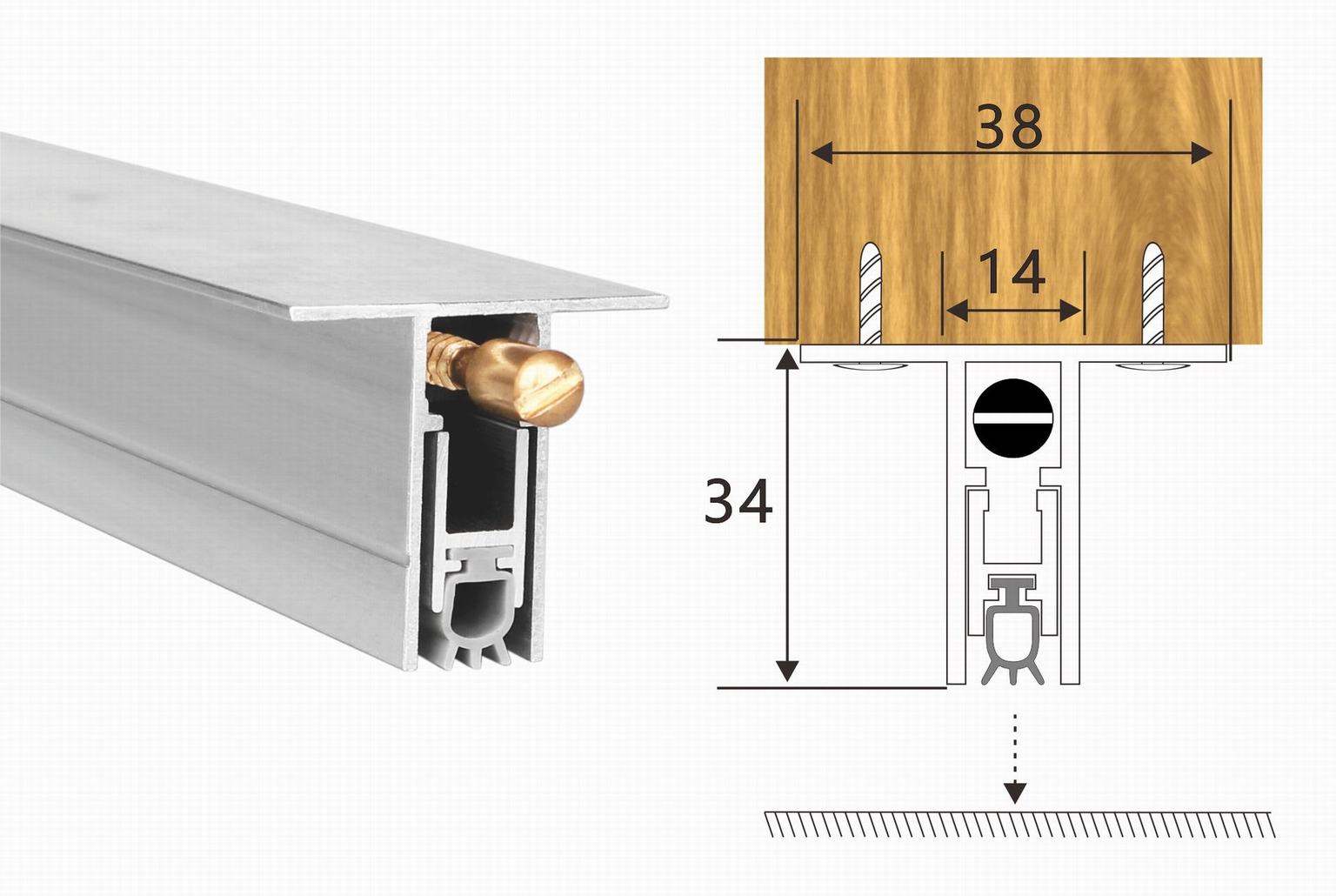Automatic Door Seals
Automatic door seals ensure efficient energy usage by sealing gaps between doors and frames automatically, enhancing insulation and comfort.
Automatic Door Seals

Automatic door seals are innovative devices designed to enhance the efficiency, comfort, and safety of buildings by providing automatic sealing of door gaps. These seals are commonly used in commercial, industrial, and residential applications to improve energy efficiency, acoustics, and indoor air quality while preventing the ingress of dust, drafts, moisture, and pests.
Comprising various components such as actuators, sensors, seals, and control systems, automatic door seals operate seamlessly to detect the movement of doors and automatically adjust the position of the sealing mechanism to create a tight seal when the door is closed. This automation eliminates the need for manual adjustment and ensures consistent and reliable sealing performance.
Key features and components of automatic door seals include:
-
Actuators: Actuators are mechanical or electromechanical devices responsible for moving the sealing mechanism into position upon activation. Depending on the design and application, actuators may include electric motors, pneumatic cylinders, or hydraulic systems. These actuators are controlled by the door seal’s control system to extend or retract the sealing mechanism as needed.
-
Sensors: Sensors are integral components of automatic door seals that detect the position and movement of the door. Common types of sensors used include proximity sensors, infrared sensors, magnetic reed switches, and pressure sensors. These sensors transmit signals to the control system, triggering the activation of the actuators to adjust the sealing mechanism accordingly.
-
Sealing Mechanism: The sealing mechanism of automatic door seals typically consists of flexible seals or gaskets made from materials such as rubber, silicone, or neoprene. These seals are strategically positioned around the perimeter of the door frame to create a tight seal against the door when closed, effectively blocking drafts, noise, and external contaminants from entering the building interior.
-
Control System: The control system serves as the brain of the automatic door seal, coordinating the operation of the actuators based on input from the sensors. It may include microcontrollers, programmable logic controllers (PLCs), or dedicated electronic control units (ECUs) programmed with algorithms to control the timing, speed, and position of the sealing mechanism. Advanced control systems may also feature integration with building management systems (BMS) or automation networks for centralized monitoring and control.
-
Power Source: Automatic door seals require a power source to operate the actuators and control system. Depending on the application and availability of power, these seals may be powered by mains electricity, batteries, or renewable energy sources such as solar panels. Battery-powered automatic door seals offer the flexibility to be installed in locations without access to mains power or during power outages.
Benefits of automatic door seals include:
-
Improved Energy Efficiency: By effectively sealing door gaps, automatic door seals help reduce energy consumption by minimizing heating and cooling losses, thus improving the overall energy efficiency of buildings.
-
Enhanced Comfort: Automatic door seals create a more comfortable indoor environment by preventing drafts, maintaining consistent temperatures, and reducing noise transmission from adjacent spaces.
-
Enhanced Indoor Air Quality: By blocking the ingress of dust, allergens, and pollutants, automatic door seals contribute to maintaining better indoor air quality, promoting a healthier and more hygienic environment for occupants.
-
Increased Security: Automatic door seals provide an additional layer of security by sealing gaps that could be exploited for unauthorized entry, intrusion, or surveillance.
-
Ease of Operation: With automatic operation, door seals eliminate the need for manual adjustment or intervention, saving time and effort for building occupants and maintenance staff.
Overall, automatic door seals offer a convenient and effective solution for optimizing the performance of building envelopes, improving occupant comfort, and reducing operational costs associated with heating, cooling, and maintenance. Their versatility, reliability, and energy-saving benefits make them a valuable addition to modern building designs across various sectors.







